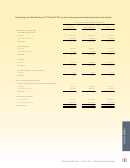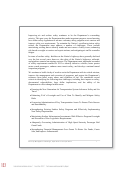Performance And Accountability Report - Fiscal Year 2013 - Federal Aviation Administration - U.s. Department Of Transportation Page 133
ADVERTISEMENT
 1
1  2
2  3
3  4
4  5
5  6
6  7
7  8
8  9
9  10
10  11
11  12
12  13
13  14
14  15
15  16
16  17
17  18
18  19
19  20
20  21
21  22
22  23
23  24
24  25
25  26
26  27
27  28
28  29
29  30
30  31
31  32
32  33
33  34
34  35
35  36
36  37
37  38
38  39
39  40
40  41
41  42
42  43
43  44
44  45
45  46
46  47
47  48
48  49
49  50
50  51
51  52
52  53
53  54
54  55
55  56
56  57
57  58
58  59
59  60
60  61
61  62
62  63
63  64
64  65
65  66
66  67
67  68
68  69
69  70
70  71
71  72
72  73
73  74
74  75
75  76
76  77
77  78
78  79
79  80
80  81
81  82
82  83
83  84
84  85
85  86
86  87
87  88
88  89
89  90
90  91
91  92
92  93
93  94
94  95
95  96
96  97
97  98
98  99
99  100
100  101
101  102
102  103
103  104
104  105
105  106
106  107
107  108
108  109
109  110
110  111
111  112
112  113
113  114
114  115
115  116
116  117
117  118
118  119
119  120
120  121
121  122
122  123
123  124
124  125
125  126
126  127
127  128
128  129
129  130
130  131
131  132
132  133
133  134
134  135
135  136
136  137
137  138
138  139
139  140
140  141
141  142
142  143
143  144
144  145
145  146
146  147
147  148
148  149
149  150
150 Information for Operators, Safety Alerts for Operators, and
inaccurate data. The IG has stated that FAA must further refine
Advisory Circulars (ACs).
this tool so that it more effectively allocates inspector resources.
Specifically, the FAA published Advisory Circular 120-109,
ACTIONS TAKEN IN FY 2013:
Stall and Stick Pusher Training, which details best practices
The FAA recognizes IG concerns and is taking action to rectify
and guidance for training, testing, and checking for pilots to
performance gaps that contributed to the issues identified in the
ensure correct and consistent responses to unexpected stall
IG report. In the interim of implementing the new certification
warnings and stick pusher activations; and a final rule on Pilot
and surveillance system called Safety Assurance System, FAA
Certification and Qualification Requirements which created
established a team to review and focus on improvements to
new minimum requirements for pilots in air carrier operations;
the current FAA risk-based oversight system, and inspector
guidance and training, based on the IG recommendations. In
Additionally the FAA continued to work on the final rule
August 2013, FAA personnel conducted a briefing to the Flight
for Qualification, Service and Use of Crewmember and
Standards Regional branch managers on IG concerns and each
Aircraft Dispatchers. The final rule entered executive
recommendation detailed in their report. FAA’s oversight system
review in June 2013. This rule is designed to enhance
and its application in FAA’s oversight of part 145 repair stations
training requirements for all air carrier pilots.
was briefed to re-familiarize the use of FAA oversight system as
it was intended and to completely convey the expectations that
The FAA continues to make progress on the Pilot Records
all international field offices are required to use the protocols.
Database (PRD) despite the complexity associated with
The problems and causes of each issue along with the next
this project (as noted in DOT IG Report AV-2013-037 dated
steps to occur were discussed in the briefing. The regional
January 31, 2013). In March 2013, a Rulemaking Action
branch managers briefed all the field office managers and
Plan was approved, which outlines key issues associated
inspectors in September 2013. The team began drafting revisions
with implementation of this rule. The PRD rulemaking
to FAA Order 8900.1 and repair station course to include the
team is currently drafting the NPRM document.
changes necessary that will provide more comprehensive and
standardized procedures for conducting inspections and reporting
Current rulemaking projects are in various stages of the process.
The rulemaking process is complex and lengthy as the FAA
findings. A recurrent training course is under development
requiring airworthiness inspectors to complete annually,
considers all aspects of impact and the input of stakeholders.
The FAA was challenged in completing the requirements of the
titled “Assessment and Planning Tools Transition Training for
Airworthiness Inspectors”. The course provides instructions on
Act by short timelines, requirements between sections, and the
the use of the risk-based oversight system tools and processes
need for coordination with industry and other agencies before
currently in place. It emphasizes the necessity to act upon
proposing a final rule.
identified risks until mitigation is complete. A standardized
checklist has been developed for inspectors to use and ensure a
complete inspection is performed.
KEY CHALLENGE:
Providing More Rigorous Risk-Based Oversight of Repair Stations
and Identifying Inspector Staffing Requirements
KEY CHALLENGE:
ISSUE:
Identifying the Effects of Air Traffic Controller Scheduling on
Since 2003, the IG has issued reports critical of FAA’s
Safety, Cost Efficiency, and Controller Performance
surveillance of aircraft repair stations. The most recent one,
ISSUE:
released in January 2013, states that FAA’s risk based oversight
A series of high-profile incidents in early 2011 involving
system to help inspectors target surveillance to areas of higher
controllers who were sleeping on duty sparked public concern
risk is ineffective. Also, it does not provide inspectors with
about controller fatigue. In April 2011, FAA instituted a
comprehensive data needed for analytical reviews of a repair
station’s performance.
series of policy changes including placing an additional air
traffic controller on the midnight shift at certain facilities and
Also, the DOT’s IG does not think that FAA’s inspector staffing
mandating a minimum of 9 hours off between evening and day
model effectively projects staffing needs due to incomplete and
shifts.
131
|
|
Federal Aviation Administration
Fiscal Year 2013
Performance and Accountability Report
ADVERTISEMENT
0 votes
Related Articles
Related forms
Related Categories
Parent category: Business









